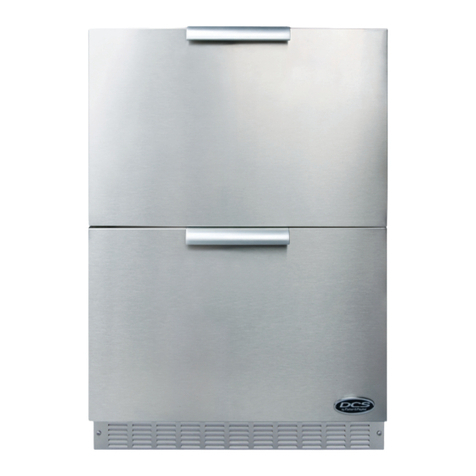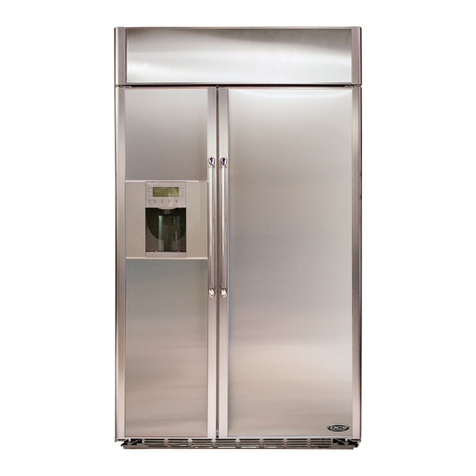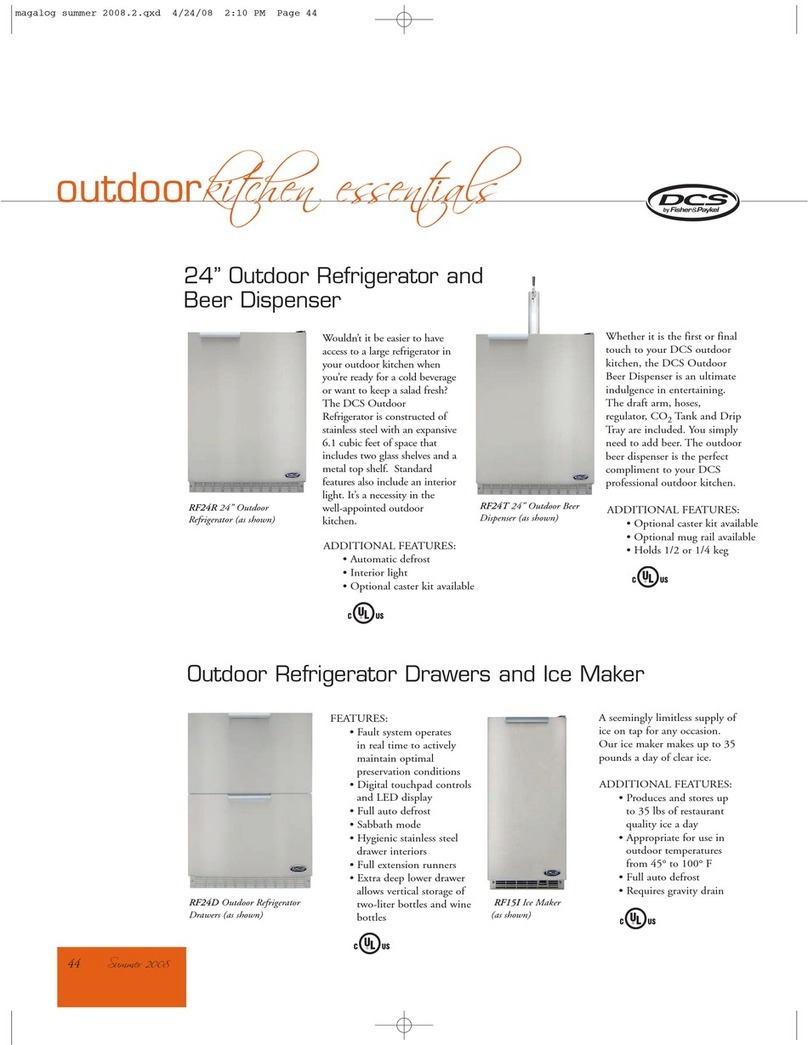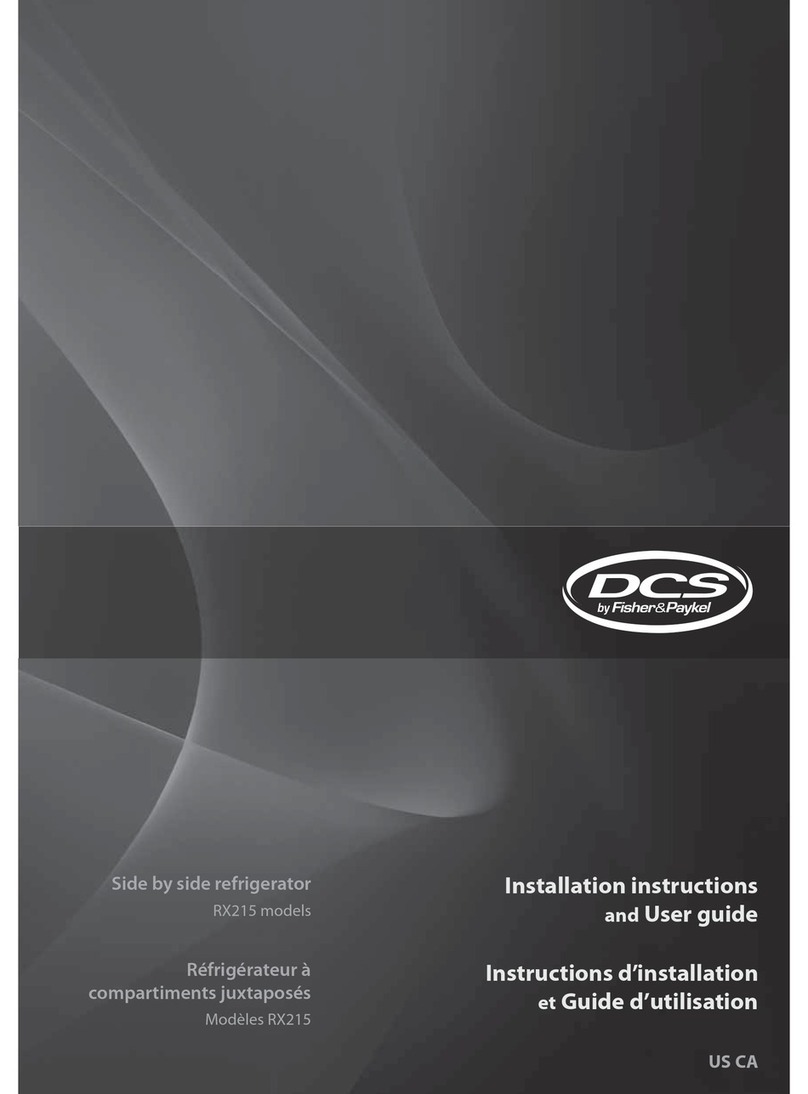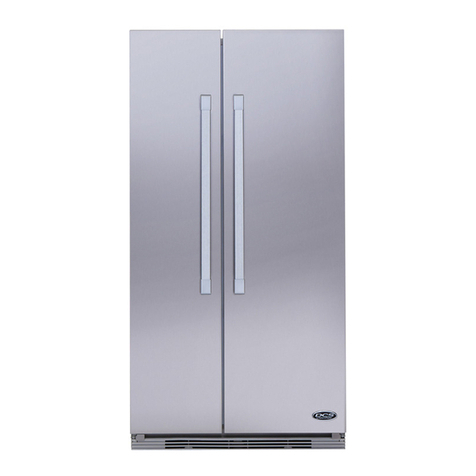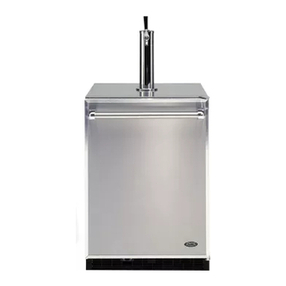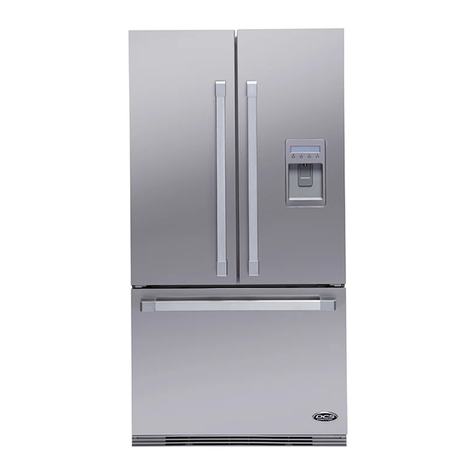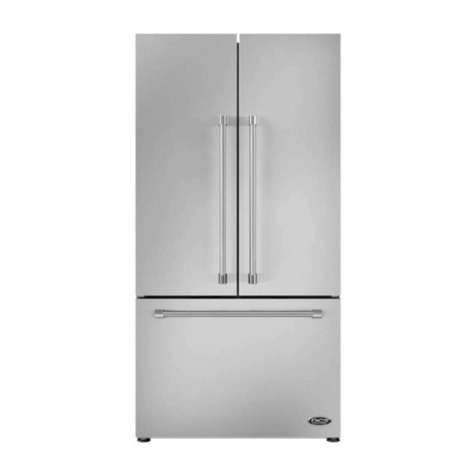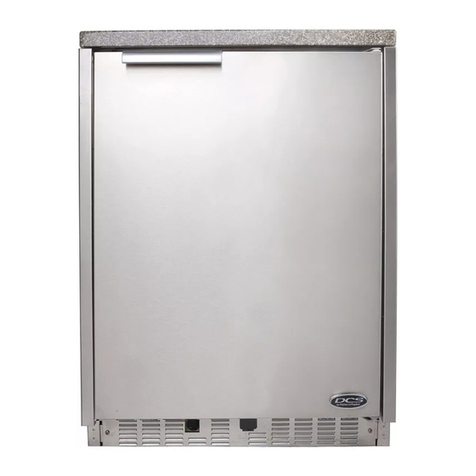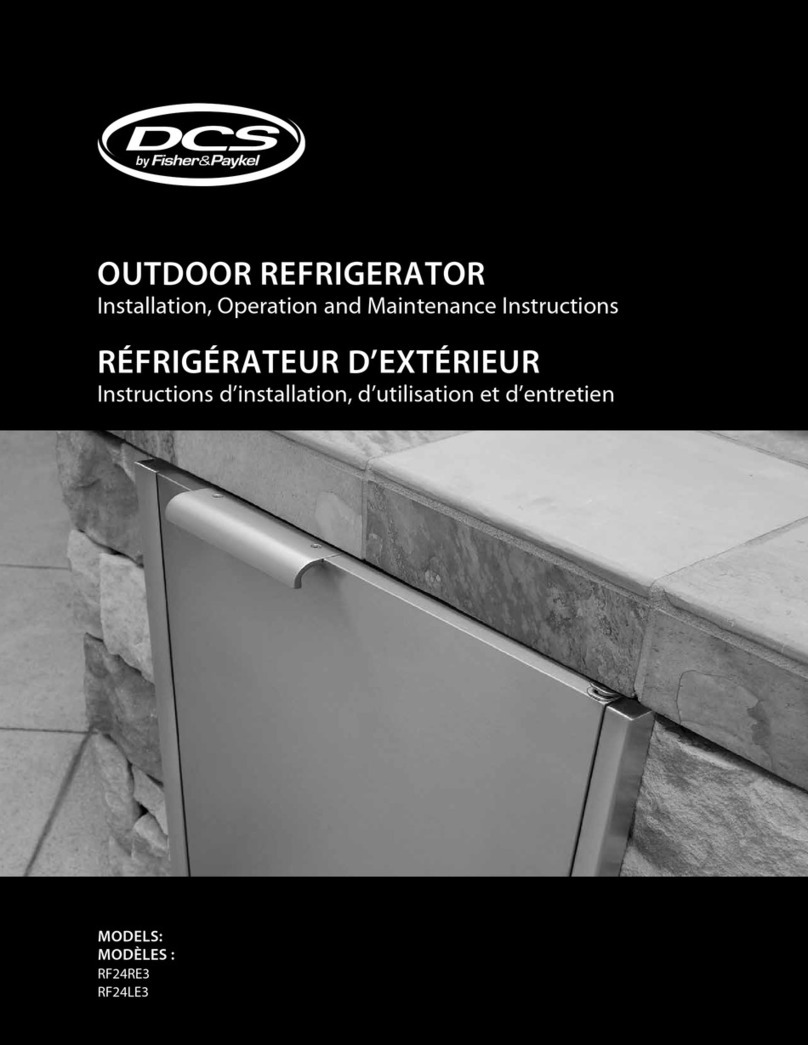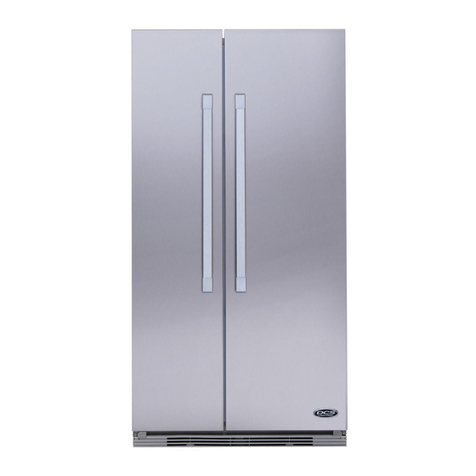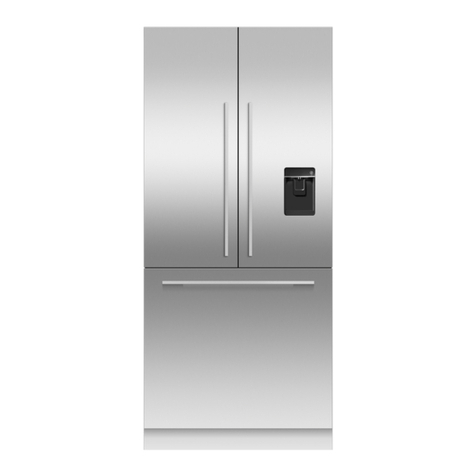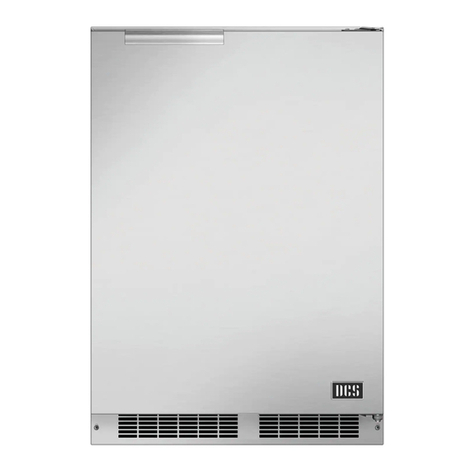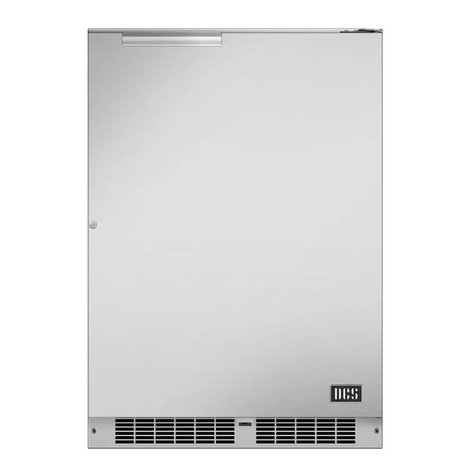EN
8Installation instructions
4. Water connection
Important!
It is important that all installations meet local plumbing code requirements. If you are unsure,
consult a licensed, qualified plumber.
Connect ⁄” (6.35 mm) OD copper tubing to household plumbing to ensure compliance with local
codes and compliances.
The new connections supplied with the refrigerator are to be used. Old connections from old
Ice & Water products should not be used.
Installation precautions/warnings
DO NOT use the Ice & Water system with water that is microbiologically unsafe or of unknown
quality without adequate disinfection before or after the system.
CONFIRM inlet water pressure to refrigerator connection is between 35 psi and 100 psi. This
applies to reverse osmosis systems. If the pressure from your reverse osmosis system is lower
than this, consult a licensed, qualified plumber.
DO NOT connect or use on hot water supply (100°F (38°C )max).
DO NOT install where electrical wires or water pipes may be located behind the wall and in the
path of drilling.
CHECK for any water leaks before placing refrigerator in its final position. Recheck for leaks after
24 hours. Water damage due to an improper water connection may cause mold / mildew growth.
Clean up spills and leakage immediately.
DO NOT use a self piercing or ⁄” (4.7 mm) saddle valve. Both reduce the water flow, can become
clogged over time, and may cause leaks if repairs are attempted.
USE copper tubing only to run from the incoming water supply to the refrigerator. Plastic tubing
is not recommended.
Tools needed
¼“ (6.35 mm) outer diameter soft drawn copper tubing. There should be less than 10 feet
(3 meters) from the inlet connection to the refrigerator. The tube needs to easily cover the
distance.
Shut-off valve (requires a ¼“ (6.35 mm) hole to be drilled into the water supply line before valve
attachment).
Adjustable wrench.
¼” (6.35mm) hex nut driver.
Note:
Use copper tubing only for installation. Plastic tubing is not recommended.
Add 8’ (2440 mm) to the copper tubing length needed to reach the water supply for the
creation of service loop in the pipe when the cabinet is pushed back against the wall.

